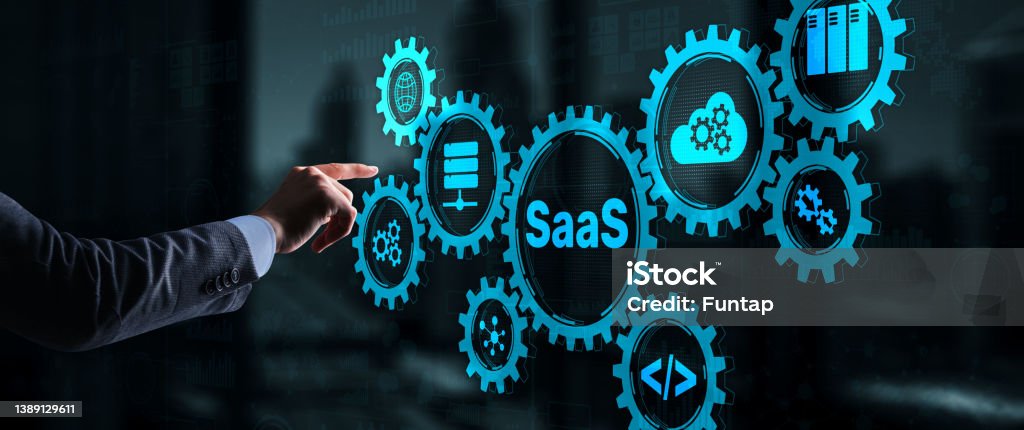Introduction
If you’ve ever used Google Docs, Dropbox, or Zoom, you’ve experienced SaaS—Software as a Service—in action. SaaS has revolutionized how we use software, making it more accessible and flexible than ever before. But what exactly is SaaS? And why is everyone talking about it? Let’s break it down in simple terms.
1. What Is SaaS?
SaaS stands for Software as a Service. Instead of buying software and installing it on your computer, SaaS lets you use applications over the internet. Think of it as renting software rather than owning it.
Unlike traditional software, which you download and maintain yourself, SaaS runs on cloud servers managed by companies like Microsoft, Google, or Salesforce. You simply log in through your browser, and everything happens online.
2. How Does SaaS Work?
SaaS applications live “in the cloud”—meaning their data and software are hosted on remote servers. You access them through the internet, usually via a web browser or an app.
This setup means you don’t need to worry about installing updates or managing servers—your SaaS provider handles all that behind the scenes.
3. Examples of Popular SaaS Applications
Some of the most familiar SaaS apps include:
-
Google Workspace: Gmail, Docs, Sheets, and more.
-
Slack: Team communication and collaboration.
-
Zoom: Video conferencing made simple.
-
Dropbox: Cloud storage for files.
-
Salesforce: Powerful CRM software for businesses.
These apps cover everything from productivity to communication and customer management.
4. Benefits of SaaS
Why is SaaS so popular? Here are some major benefits:
-
Cost Savings: No big upfront purchase; pay monthly or yearly.
-
Accessibility: Use it anywhere with an internet connection.
-
Automatic Updates: No manual downloads; updates happen seamlessly.
-
Scalability: Easily add or remove users based on your needs.
5. Common SaaS Use Cases
SaaS works well for:
-
Small Businesses: Affordable tools for managing tasks, payroll, and marketing.
-
Teams: Collaborate in real time from anywhere.
-
Sales & Marketing: CRM systems track customers and campaigns efficiently.
6. SaaS vs On-Premises Software
Traditional software is installed on your local machines or company servers—this is called on-premises software. SaaS, on the other hand, is hosted remotely.
Pros of SaaS:
-
Easy setup
-
Lower upfront costs
-
Frequent updates
Cons of SaaS:
-
Requires internet access
-
Less control over data storage
7. Key Features of SaaS Platforms
-
Scalability: Add users or features quickly.
-
Multi-tenancy: Multiple customers share the same software version but keep data separate.
-
Security: Providers invest heavily in data protection, but you still need to be cautious.
8. How to Choose the Right SaaS Solution
Pick a SaaS product that fits your:
-
Needs: What features do you require?
-
Budget: Monthly fees vary widely.
-
Integrations: Can it work with tools you already use?
-
Support: Check for responsive customer service.
9. Potential Downsides of SaaS
-
Internet Dependency: No connection, no access.
-
Data Privacy: Your data is stored on someone else’s servers, which may be a concern for sensitive info.
10. The Future of SaaS
SaaS is evolving fast, with trends like:
-
AI Integration: Smarter tools that automate tasks.
-
Vertical SaaS: Industry-specific software solutions.
-
Increased Adoption: More businesses of all sizes are moving to the cloud.
Conclusion
In simple terms, SaaS is a modern way to access software without the hassle of installation or maintenance. It’s cost-effective, flexible, and perfect for today’s connected world. Whether you’re a business owner, a freelancer, or just curious, SaaS offers tools that can make your digital life easier.
FAQs
Is SaaS safe to use?
Generally yes, as providers use strong security measures, but always choose reputable companies.
Can I customize SaaS software?
Many SaaS apps offer customization options, though not as flexible as traditional software.
What happens if my internet goes down?
You won’t be able to access the software until your connection is restored.
How do SaaS providers make money?
Mostly through subscription fees—monthly or yearly payments.
Can SaaS apps work offline?
Some offer limited offline capabilities, but most require an internet connection.



